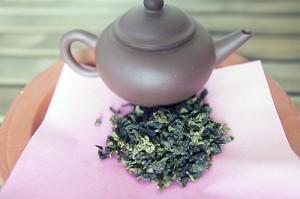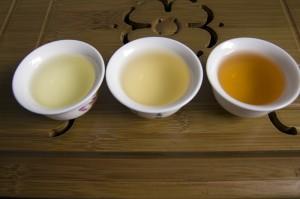If you ask casual tea drinkers to name which Chinese teas they have heard of, odds are you won’t have to wait long to hear some variation of “Tieguanyin” (铁观音) pop-up.
By any other name, Tieguanyin (Pinyin), Tik Koon Yam (Cantonese), Ti Kuan Yin (Wades-Giles), Tae Guan Yin (out of mid-air) is arguably the best known oolong tea in the world.
Not surprisingly, it is also one of the most misunderstood and misrepresented variety out there, starting with its name.
What’s in a name?
The literal translation of Tieguanyin is the “Iron Goddess of Mercy”, so named after a Buddhist deity, often depicted as female. Hence you have variations like Iron Buddha (wrong deity), Iron Boddhisatva (wrong and how many times do I need to re-read it to make sure I spelled it correctly), Iron Goddess (simplified) and so forth.

Whichever the case, it is most likely that Tieguanyin has been around since the early to mid-18th century.
A Cultivar, variety and styles
First, a bit of definition.
Cultivar as is commonly understood in the tea world is a “cultivated variety” which is technically inaccurate but we will leave it as such for the time being.
In this case, Tieguanyin can mean the cultivar or 茶树 (literally tea tree), which refers to the sub-species of the Camellia sinensis v. sinensis plant.
Tieguanyin as the variety- i.e. the type of finished tea- is generally made from the Tieguanyin cultivar and is a type of oolong tea.
However, when you refer to Tieguanyin, it refers to more than 1 type of process.
Broadly, there are 2 main styles of Tieguanyin:
i) 清香- Qingxiang- ‘light aroma’
ii) 浓香- Nongxiang- ‘thick aroma’

These are also known as ‘green style’ Tieguanyin and are favored for their fragrance and pleasant verdant appearance of its dry leaves.
The ‘Nongxiang’ style refers to the heavier oxidation- circa 30-50%- and heavier roast styles that was traditionally popular among Southern Chinese and migrant Chinese communities, particularly in South East Asia.
These are characterized by browned dry leaves and brownish liquor.
Another style that lie somewhere in between the two main styles is the charcoal roasted style. It is of a lower roast compared to ‘nongxiang’ but higher oxidation and roast compared to ‘qingxiang’.
“Yunxiang” style (韵香型) is also another popular hybrid, lying somewhere in between ‘qingxiang’ and ‘nongxiang’.
Within each of the categories though, the level of oxidation and roasting varies from producer to producer, with each desirous to stamp their individual brand.
*In my opinion, the ‘qingxiang’ styles don’t differ all that much, SOP driven as opposed to dependent on the discretion and skill of producers.
Where is it grown?
The birthplace of Tieguanyin is Anxi and Anxi continues to enjoy prominence on the tea map predominantly because of Tieguanyin. In fact, the story of how Anxi raised itself out of poverty is intricately linked to tea and Tieguanyin.
Apart from Anxi Tieguanyin, possibly the only other region to enjoy high regard is Muzha in Taipei district, Taiwan.
In 1896, a Taiwanese native by the name of Zhang Ximiao went to his home village in Anxi and brought back 12 shoots of Tieguanyin to cultivate.
it was a success and subsequently more than 1,000 shoots of Tieguanyin were brought back and cultivated in the Muzha area.
The processing method is closer to the “nongxiang” style with brown liquor and a heavy oxidation and roast, much like the more traditional Tieguanyin makers in Anxi.
The Outlook
Unless you were introduced to Tieguanyin by a traditional tea drinker, odds are your first exposure to Tieguanyin is either
i) The restaurant Tieguanyin (which is a poor representative of Chinese tea)
ii) “Qingxiang” or Green style Tieguanyin
The latter was the most produced style of Tieguanyin since the 21st century, especially since it involved much less skills from the producers and lots of new investors hopped on the bandwagon.
However it is in my opinion less endearing than the traditional styles and judging from the recent trends (observed in May 2013) in China, many agree.
Prices of the ‘green style’ Tieguanyin plummeted and inventory piled up.
On the other hand, traditional Tieguanyin remained highly sought after, in fact even more so than in the past, especially the highly roasted ones.
The lower supply of traditional Tieguanyin is due to the higher level of difficulty and fewer masters who are confident in this art.
Nevertheless, this is an encouraging trend as it demonstrates that tea drinkers are cultivating a taste for better made teas and a deeper appreciation for skilled makers.
Anxi Tieguanyin is one of our featured teas in June/July.
See here for other articles related to varieties of oolong tea.
